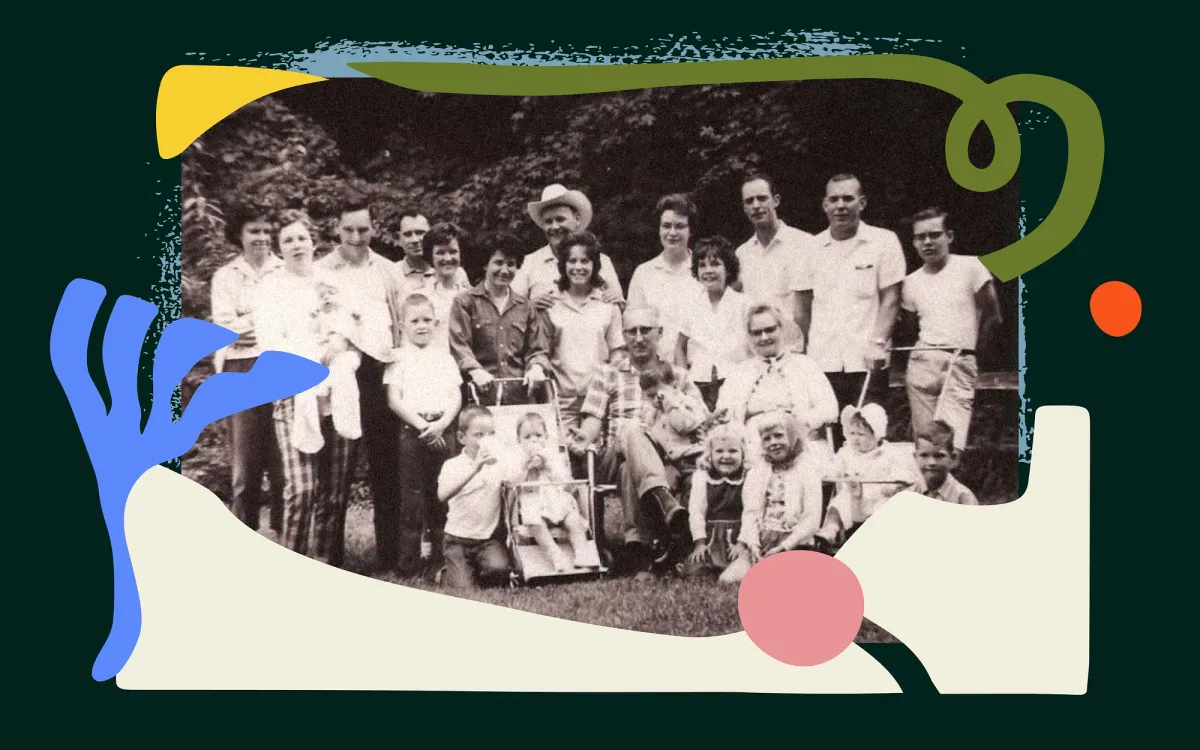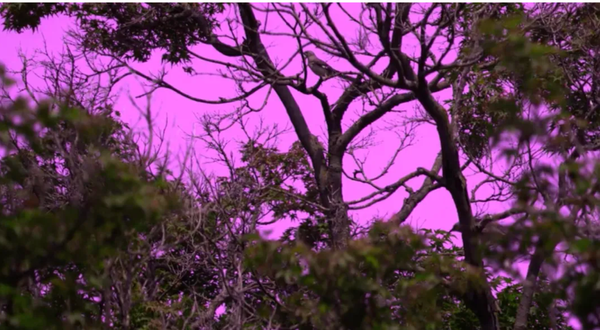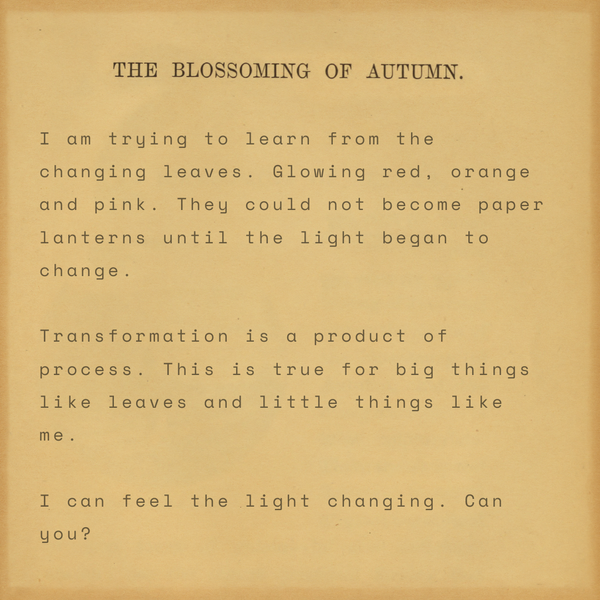Finding My Family’s Bones
How visiting Appalachia helped me begin to understand my family

This was originally published in Human Parts.
There are no stars or skyscrapers in the suburbs. Even as a child, it felt like an in-between place to me. Suburbs were built for commuters — they leave them to work and come back to them to sleep. Maybe that’s why garages are the focal point of most suburban homes: They’re the portal for a morning exit and evening reentry. In the movies, suburban streets are always full of children playing. That might be true in other places. I lived on six suburban streets in California and kids never played on the streets. The sidewalks were always empty.
Before it was full of commuters, Chino Hills was full of cattle. Its rolling hills were used as grazing space for Mission San Gabriel and Mexican ranchos. There’s still a hill or two dotted with cows between stoplights and drive-thrus. Between the 1970s and 1990s it went from rural to developed, which means the hills were covered with tract homes. I could find my way through town using a Southern California suburbanite’s cardinal directions — Del Taco, ampm, Ralph’s, and Jack in the Box. There wasn’t one bookstore but there were a couple of gyms. Once kids could drive, they went to the mall one city over. It wasn’t enough to sustain a girl obsessed with folkways and fairy tales.
On weekends, we’d drive out of town. Leaving was a relief. Southern California is full of different places and the people who make them. We ate at Jewish delis in Los Angeles where menus were rich with a cultural language that I couldn’t speak but could taste. We listened to music at Mariachi Plaza, the vihuela vibrating across my insides; it was a traditional melody I couldn’t play but could hear. When a high school friend invited me to a Bollywood night, I was introduced to an experience of silk and song and I knew it wasn’t mine to hold, but it made me feel.
When I was in these spaces, I marveled at whole communities sustained by the rich veins of a shared story. I couldn’t find suburbia’s shared story.
Our stories never left the house. I knew my grandpa was born in Greenup, Kentucky. When he was a child, his family left the hills of Kentucky to farm shares of other people’s land in Ohio. There’s a story my dad told over dinner a few times a year. My grandpa, Fred, was a kid and living on someone else’s farm outside Hillsboro, Ohio. It was the week before Christmas. He and his five brothers were playing hide and seek in the barn. One of them climbed into the hayloft, jumped, and hit something hard — there was a radio flyer wagon hidden under the hay! What an unexpected joy! Most Christmases there wasn’t enough money for presents. But this Christmas, they were going to open a brand new wagon. The boys promised each other they’d act surprised on Christmas morning.
As it turned out, they didn’t have to worry about pretending. That morning, the six boys gathered around and opened up a crate of oranges. The radio flyer was for the farm owner’s son. When my dad told this story, he always cried.
Every year, we’d get an orange in our Christmas stockings to remind us that small things are often special and stockings are not always full. A short drive from the ocean, we grew up eating cornbread in cast iron and soup beans. We read Jesse Stuart, an author from Greenup. Listened to Dolly Parton and Loretta Lynn. We developed a love for the place my grandpa left.
When he got home from WWII, Fred was still a teenager. His parents lived on a nice farm, doing better than they’d ever done. He said it felt like their home, but not his. So, Grandpa went west — prospecting in Arizona and Colorado before settling in New Mexico. My dad was raised in Las Cruces. He finished the migration my Grandpa started when he moved to Southern California in his twenties.
When I was 17, Dad said I could choose any place in the world to visit with him. I chose Appalachia. I thought by leaving my hills to see those hills, I’d be making some sort of return.
Before we went into the mountains, we visited family in Ohio. The people who stayed. One slightly distant cousin lived in a neighborhood without fences, each yard connected by a stream. A few steps into the stream, one stoop down, and you could scoop flat rocks laced with fossils. Brachiopods, crinoids, trilobites.
We ate together in their home and this cousin told us stories my dad hadn’t heard. They were little things: memories from a shared meal, a moment on the farm, laughter before one cousin began a story the other finished. My grandpa, I learned, was loved in the place he’d left.
My family members don’t just sleep in those hills, they bled and made other people bleed there too.
I envied these people for their homeness and their history. The stories we heard stretched out from their home and into the trees, land, and people around it. My dad added them to his dinner table collection. I listened while I emptied my full plate. I wondered at this cousin’s table — how did it have a place for me?
When we drove into Eastern Kentucky’s Appalachian mountains I felt like I was wading into a stream. One stoop down and I could scoop up fossils from my past. Greenup, Ashland, Paintsville, Van Lear, Pikeville, Salyersville, Middlesboro, Harlan, Berea. We ate cornbread that tasted like what we ate at home: no flour, lots of bacon grease. We listened to a man play the dobro while a woman sang about dying of a broken heart. We bought a handmade ceramic pitcher at Berea College, a school started by an abolitionist where every student receives free tuition. We watched the smoke rise from the Smoky Mountains. The Cherokee named those mountains “place of blue smoke.” And they do really seem to smoke. Or mist, maybe. It comes from the trees. The trees and all the plants around them release organic compounds that react with the air and scatter blue light, resulting in a blue mist. The mist doesn’t really obscure, it magnifies.
Eastern Kentucky is full of hollows. My grandpa called them hollers. A hollow is a narrow, deep dip between two hills. There’s only one way in and out of a hollow, and it’s often a dirt road. Houses sit on either side of the road, sometimes close to it and sometimes pressed away into the hill. I suppose every hollow is unique but the ones we visited were always verdant, secluded places cut with streams. Loretta Lynn was raised in a hollow. Sometimes homes in hollows have their own family cemeteries.
In one hollow, there’s a cemetery full of my family’s bones. It’s on a piece of land owned by a relative who didn’t know we existed until we knocked on her door. Like ghosts from her past’s many present paths. She let us walk through the cemetery. It was carved out of a stand of trees, wrapped with a fence that couldn’t keep out time or creeping vines. The ground was soft and moved under me. As I stood over the bones of people who shared my name, I felt like they claimed me. When we got back home, to the full strip malls and empty sidewalks, I tried to hold onto the feeling of standing in that hollow. There’s no blue haze in Southern California.
A tourist can only catch glimmers of the beauty and glances of the ugly.
Of course, culture isn’t just cornbread, it’s complicated. One trip couldn’t reconnect me to the story of those hills. Walking into a hollow my family walked out of couldn’t help me grasp the pride of the place, or its prejudices.Eating pie in Pikeville didn’t make me an Appalachian expert. I didn’t learn about Kentucky outside of my white foremothers and fathers’ experiences. Some of them may have been Appalachian activists, but that didn’t make me one. A tourist can only catch glimmers of the beauty and glances of the ugly. Eastern Kentucky is a community sustained by rich veins of a shared story; I can’t simply extract what I like and walk away.
My family members don’t just sleep in those hills, they bled and made other people bleed there too. A story about a crate of oranges and a radio flyer adds texture to my experience but it isn’t my experience, and it isn’t the full story either.
Ten years after our trip, my dad died. There was no green hollow for him. His grave overlooks a valley filled with tract homes. Generations from now, will someone wander back to him, looking for his bones? When I stand in that cemetery over my dad, I am moved to claim a heritage that will make his bones matter.
A year before my grandpa died, he wrote that New Mexico was his home, “tho now, as the years have passed I too know that my roots are in Kentucky.” My husband, daughters, and I live in a city we love. The sidewalks aren’t empty here. We make cornbread in cast iron. This is our home. But I can’t shake the sureness that my roots are in Kentucky.
Maybe my past isn’t a mountain, maybe it’s a tree. Those bones in that little hollow are my roots. Sometimes, in my western city so far from our hills, I sit on the back porch and press my wrists, my knees, my ankles, my knuckles to feel my own bones. They were grown with bits of the same material that grew my ancestors’ bones, my DNA is marked with their trauma and triumph. If they are the tree, I am too. I breathe out, a compound of me and them. And there, just for a moment, a blue mist rises and everything is magnified.




